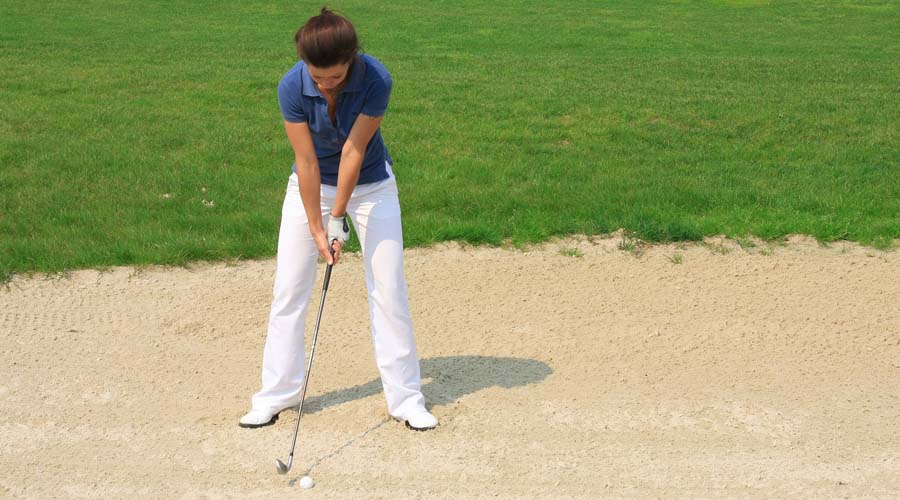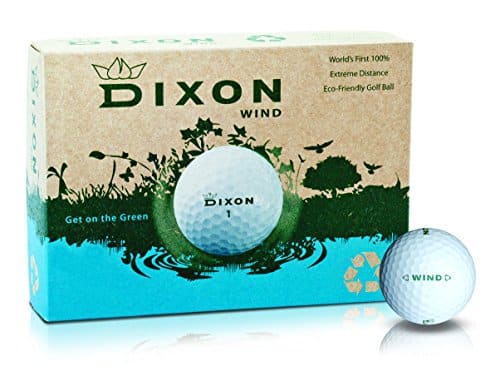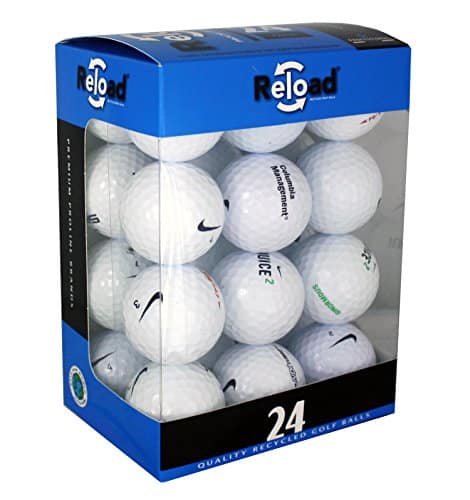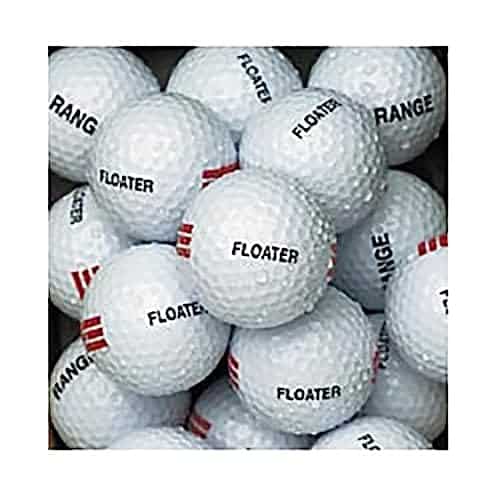Do you love playing golf but hate the thought of harming the environment? If so, you’ll be glad that biodegradable golf balls are now available on the market!
But what are biodegradable balls made of?
The answer is simply materials that will break down over time, so you can play without feeling guilty about your impact on the planet.
Standard balls are made of materials that can take hundreds of years to break down.
This means that even if you only play a few rounds a year, your golf balls could harm the environment for centuries.
In this blog post, we will look at what biodegradable golf ball is made of and how they compare to traditional balls.
We’ll also provide tips on how to switch to them without having to sacrifice your game.
There are a few key ways eco golf balls differ from normal balls.
Generally, they are made of materials like corn starch or potato starch, sugar cane, polyvinyl alcohol (PVA)
This means they will break down over time in water, unlike regular balls made of plastic or rubber.

How do they compare to traditional golf balls?
Biodegradable balls often have lower compression ratings than normal golf balls. This means they don’t travel as far when you hit them but tend to bounce less off the ground.
These balls are typically more expensive than traditional balls. However, this may change as the market for biodegradable balls grows.
Best Biodegradable Golf Balls
Below I’ve compiled a list of the best biodegradable golf balls available.
The following products offer great performance on the course and minimal environmental impact.
Biodegradable Golf Balls – Water-Soluble Golf Ball
These biodegradable golf balls are ideal for eco-conscious golfers looking to reduce their environmental impact.
Pros
- Water-soluble, dissolves in water within weeks
- They come in a 24-pack, which is great for beginners
- Produced by a Canadian company passionate about eco-golf
Cons
- Not suitable for professional golf use
- It may not appeal to golfers who prioritize performance over eco-friendliness
- Inappropriate for individuals who don’t care about the environment
Biodegradable Golf Balls are designed to dissolve in water within a few weeks, making them perfect for practicing near bodies of water, such as lakes, rivers, and oceans.
Lake-side golfing, yacht parties, and cruise ships are now guilt-free activities for environmentally-conscious golf enthusiasts.
This 24-pack of eco golf balls is ideal for casual golfers or a novelty gift for eco-friendly individuals.
Coming from a Vancouver-based company, these golf balls showcase their love and passion for golf while striving to make eco-golf more mainstream.
However, these golf balls are not intended for professional golf use, as their performance might not be on par with traditional golf balls.
Biodegradable Golf Balls provide an eco-friendly alternative for golf enthusiasts, perfect for casual playing and locations near bodies of water.
While unsuitable for professional use, these golf balls are an excellent choice for those who value the environment and want to impact the planet positively.
Albus Golf Dixon Wind Eco-Friendly Max Distance Golf Balls
The Albus Golf Dixon Wind Golf Balls are ideal for those seeking eco-friendly options without compromising performance.
Pros
- Environmentally friendly with 100% recyclable materials
- 428 Monster dimple pattern for distance and accuracy
- Densified precast green core for greater distance
Cons
- It may not significantly increase distance for short hitters
- Not as high-performing as some premium brands
- Suitable for specific player types (slower swing speeds)
Albus Golf’s Dixon Wind Eco-Friendly Max Distance Golf Balls are designed to cater to golfers with slower swing speeds, such as juniors, seniors, and beginners.
These golf balls provide a straighter, longer shot, controlling the spin while optimizing distance.
With a more modest trajectory and maximum roll, they help achieve the longest possible shot from a slower swing speed.
Apart from maximizing your game, the Dixon Wind golf balls also contribute to a healthier environment.
Albus Golf prides itself on its commitment to producing eco-friendly golf products, from balls and equipment to apparel and packaging made from 100% recyclable materials.
This ensures you enjoy a high-performance golfing experience and a sustainable, environmentally-conscious choice.
If you have a swing speed of 60-80 MPH or a handicap of 20+ and care about the environment, the Albus Golf Dixon Wind Eco-Friendly Max Distance Golf Balls are tailored to your needs.
However, if you prioritize golf ball performance above all else or fall outside of the target player demographic, you might want to explore other options on the market.
Nike Reload Recycled Golf Balls (24-Pack)
These Nike Reload Recycled Golf Balls are cost-effective for golfers who want to try different Nike models without compromising quality.
Pros
- A mix of various popular Nike golf ball models
- Budget-friendly
- Suitable for both casual and serious golfers
Cons
- Some balls may have slight cosmetic blemishes or discoloration
- Packaging may vary
- No fixed percentage of each model in the mix
These Nike Reload Recycled Golf Balls come in a pack of 24 and include a mix of Nike’s golf ball models, allowing golfers to experience a variety of options at an affordable price.
The mixed pack may consist of Vapor Black, Hyperflight, 20XI, Mojo, Juice, Karma, Ignite, Crush, NDX, Tour Control, Tour Accuracy, and Feel+Speed models.
This provides a great opportunity for golfers to find their preferred golf ball for optimal performance on the course.
Although these balls are recycled, the condition of the balls remains similar to a slightly used golf ball, making them a suitable choice for casual and serious golfers.
However, be prepared for some cosmetic blemishes, discoloration, or minor loss of luster on a few of the balls. This is expected in recycled golf balls and will not affect the playability of the balls.
It’s worth noting that the packaging may vary, and there isn’t a set percentage of each model included in the mix.
This element of surprise could either be exciting for those looking to try a range of balls or inconvenient for those who prefer specific models.
Nevertheless, with a rating of 4.4 stars out of 5, this pack of Nike Reload Recycled Golf Balls offers excellent value for money and a chance to discover various Nike golf ball styles.

Buying Guide
When looking for the best biodegradable golf balls, several factors must be considered to ensure we make the right choice. In this buying guide, I’ll discuss the essential features to look for in a high-quality, eco-friendly golf ball.
Material
The first thing to pay attention to is the material used in the golf ball. It should be made of non-toxic and biodegradable materials, such as cornstarch or recycled pulp.
These materials break down naturally over time, causing minimal environmental harm.
Performance
Although the primary focus is being eco-friendly, we should not overlook the ball’s performance.
Some eco golf balls may not provide the same performance as traditional balls.
Look for those offering comparable distance, accuracy, and durability to meet your playing needs.
Price
While the price may not be the most crucial factor, it is still worth considering when choosing biodegradable golf balls.
Like any other product, these golf balls come at various price points.
Strike a balance between affordability and quality. Investing in a budget-friendly yet high-quality product is ideal.
Certification
It is essential to check for certifications or endorsements from environmental organizations.
These certifications ensure that the golf balls meet specific standards and are eco-friendly.
what are biodegradable golf balls made of
Biodegradable golf balls are made from eco-friendly materials depending on the brand and specific design.
Some are composed of various plant-based and organic materials, while others are made from naturally dissolvable compounds.
A popular type of biodegradable golf ball is a fish food golf ball, made from a core of fish food surrounded by a water-soluble casing.
Once these balls land in a water hazard, the casing dissolves, releasing the fish food into the water.
Other biodegradable golf balls can be made from corn, soy, and other compostable substances. Some even use substances like limestone or bamboo.
It’s important to note that while these balls are designed to reduce environmental impact, they may not perform exactly like standard golf balls.
The materials’ degradation process can affect the ball’s flight characteristics and durability.
It is also crucial to remember that even biodegradable materials can impact local ecosystems if not disposed of properly.
How to switch to eco-friendly golf balls without sacrificing your game
If you’re interested in switching to a more eco-friendly game of golf, you can do a few things to make the transition as smooth as possible.
First, try using some of the clubs you use for regular balls. This will help minimize the adjustment period. Second, don’t expect miracles right away.
It may take a while before you get used to how these balls perform on the course.
Finally, tell your friends and fellow golfers about your decision to go green!
They may want to make the switch too. Now that you know what biodegradable balls are made of, it’s time to make the switch and do your part in preserving our planet!
Are there any drawbacks to using biodegradable golf balls?
One potential drawback of how environmentally friendly golf balls work is that they may not perform as well as traditional balls.
For example, they may not travel as far or may not be as durable.
Additionally, they may be more expensive than standard golf balls.
However, the price difference is typically small, and the environmental benefits of using biodegradable golf balls outweigh the cost.
How do normal golf balls harm fish and marine animals?
Golfers have been using traditional golf balls for centuries, but these balls are not biodegradable and can harm fish and other marine animals.
The rubber and plastic in the balls take a long time to decompose, and they often get stuck in the throats of fish or choke them when they ingest them, accidentally mistaking them for fish food.
When normal golf balls decompose, they can release toxic chemicals into the environment, harming fish and other aquatic animals.
Biodegradable golf balls may also be filled with compressed air instead of gas emissions like carbon dioxide, so they are better for the environment overall.
Are there biodegradable golf balls for water?
Several eco friendly golf balls are specifically designed for use near water like lakes and the ocean. Designed to avoid harming fish and marine life.
These eco friendly golf balls are typically made of all-natural materials and are water soluble golf balls that will break down over time when exposed to water.
Dissolvable golf balls won’t do as much damage as regular golf balls, typically made from synthetic materials.
Water-soluble balls are designed to break down through natural processes quickly after being hit by a body of water, such as a lake or river.
This helps reduce the amount of plastic pollution caused by discarded balls.
These balls are available in two different types: hard and soft. The hard balls are made from a biodegradable polymer designed to dissolve slowly in water.
The softer balls are made from biodegradable natural latex materials that decompose quickly in water.
Both types of balls are available in several colors, including white, yellow, green, and pink.
Be sure to use these balls on courses close to the ocean.
Will biodegradable golf balls dissolve in soil?
No, they will not dissolve in soil. However, they will eventually break down when exposed to the elements.
The lifespan of an eco-friendly ball depends on the material it is made from.
For example, a ball made from all-natural materials will break down faster than one made from synthetic materials.
All biodegradable balls will eventually decompose, making them a more environmentally responsible option than traditional balls.
How long do biodegradable golf balls take to decompose?
The answer may surprise you – eco-friendly golf balls usually take only a few weeks to decompose!
That’s not long, especially when you consider a conventional ball made of non-biodegradable materials like rubber and plastic can take up to 500 years to degrade.
So, what makes eco-golf balls different? They’re made of natural materials like bamboo, wool, and cornstarch.
These materials break down much faster than rubber and plastic, so they’re much better for the environment.

Can you recycle golf balls?
You can recycle golf balls. However, recycling them is not as easy as recycling other materials.
Recycling these balls is called reclamation, and it involves breaking down the materials in the golf ball so that they can be used again.
Reclamation is difficult and expensive, so most golf courses and manufacturers don’t bother with it. That’s why most balls end up in landfills.
It’s estimated that more than 300 million unused or unwanted golf balls are in landfills worldwide!
Some golf balls are recycled into new ones. However, most of them are used to make other products.
For example, the rubber from old golf balls is often used to make new shoes and tires.
The plastic used in them is used to create new products such as flower pots and park benches. And the metal parts are melted down and reused in car parts and kitchen appliances.
Biodegradable golf balls are much better for the environment than regular plastic ones.
Using them has several benefits, including reducing environmental impact and helping preserve our planet.
So if you’re looking to make a difference, switch to biodegradable golf today!
Summary
Biodegradable golf balls are much better for the environment than regular plastic ones.
Using them has several benefits, including reducing your environmental impact and helping preserve our planet.
When selecting the best biodegradable golf balls, consider the material, performance, price, and any relevant certifications.
Making a well-informed decision will benefit our game and contribute to our planet’s sustainability.
So if you’re looking to make a difference, switch to biodegradable golf today!






